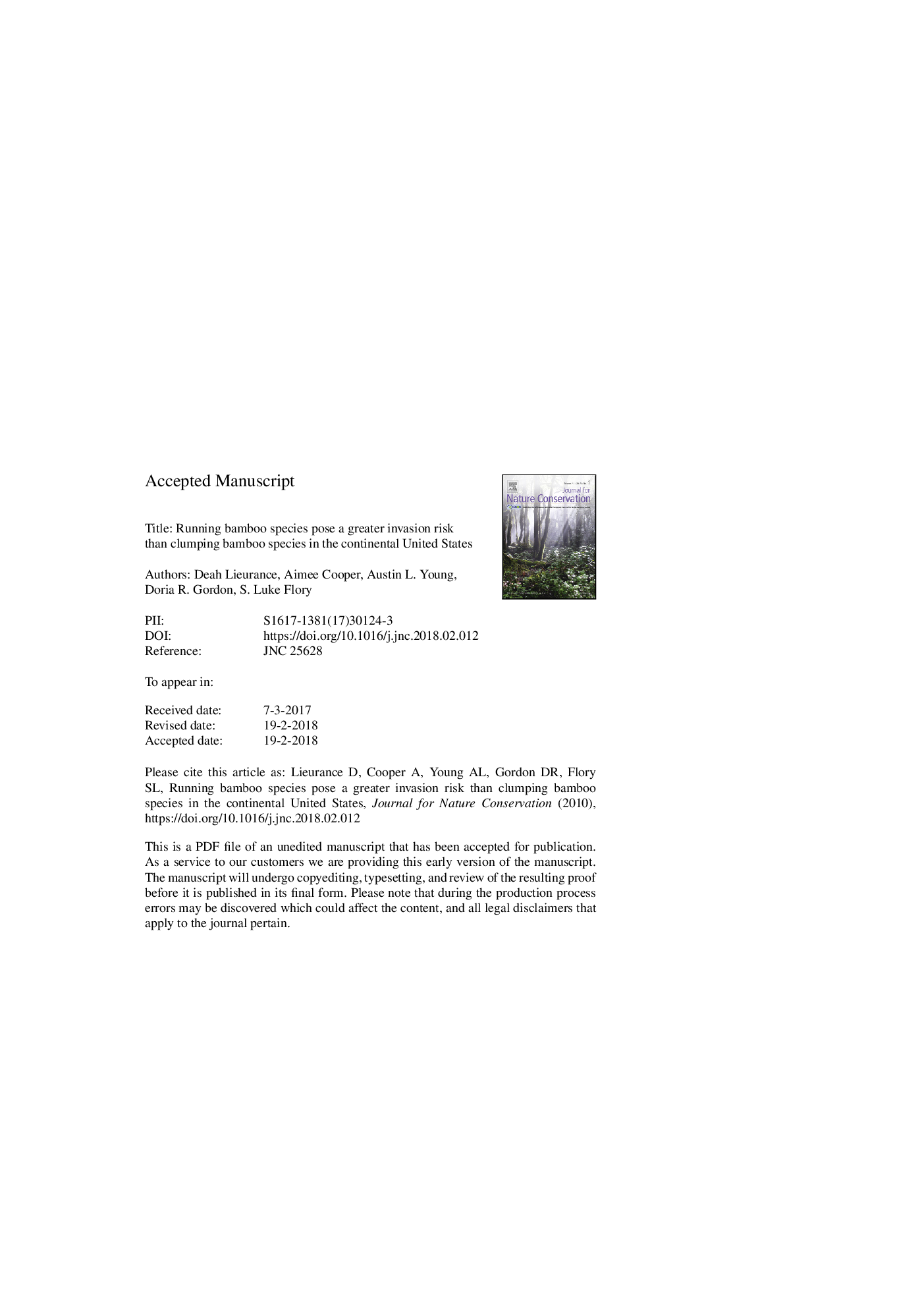| Article ID | Journal | Published Year | Pages | File Type |
|---|---|---|---|---|
| 8849254 | Journal for Nature Conservation | 2018 | 27 Pages |
Abstract
Bamboo species have been promoted for utility in both biomass and pulp production because of their high productivity. However, some bamboo species are known to be problematic invaders. Our goal was to use a weed risk assessment (WRA) tool to evaluate and compare invasion risk of non-native running and clumping bamboo species, many of which are under consideration as paper pulp and bioenergy crops in the continental United States. WRAs were conducted for 18 running and 29 clumping bamboo species using a version of the Australian WRA modified for the U.S. We tested for differences in scores and the number of questions answered for clumping and running species, the relationship between the WRA score and the number of questions answered, and the questions that differentiated low and high-risk species. Overall, we found that running bamboo species present a significantly higher invasion risk than clumping species. Only one running bamboo species (Chimonobambusa tumidissinoda) was identified as low risk and one clumping species (Bambusa bambos) was high risk for invasion. History of invasiveness elsewhere, the ability to form dense thickets, and unintentional dispersal of viable rhizome pieces were associated with significantly greater predicted risk. Commercial applications of bamboo should focus on the use of low invasion risk clumping bamboo species to reduce the risk of escape and colonization of nearby natural areas. Further, bamboo-specific best management practices (BMPs) should be implemented to reduce the probability of invasion for species used in commercial production.
Keywords
Related Topics
Physical Sciences and Engineering
Earth and Planetary Sciences
Earth and Planetary Sciences (General)
Authors
Deah Lieurance, Aimee Cooper, Austin L. Young, Doria R. Gordon, S. Luke Flory,
